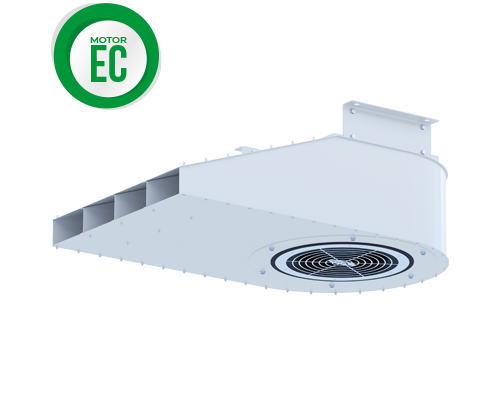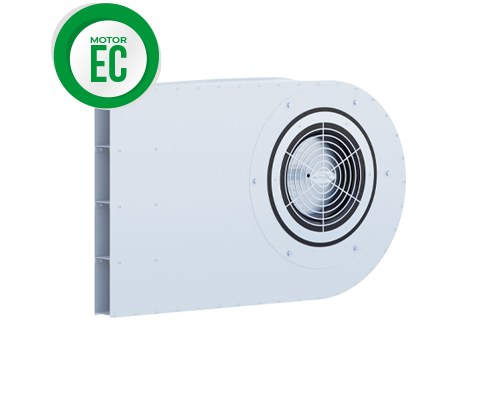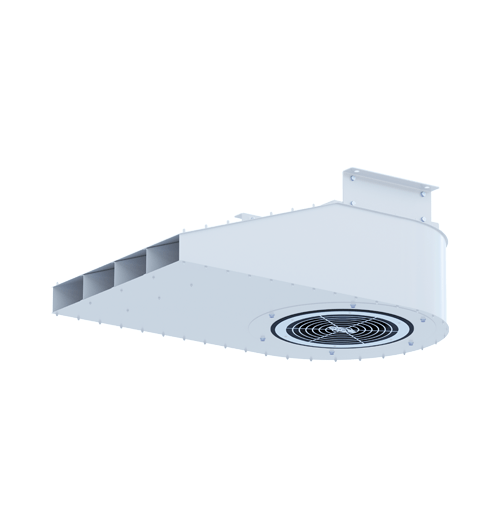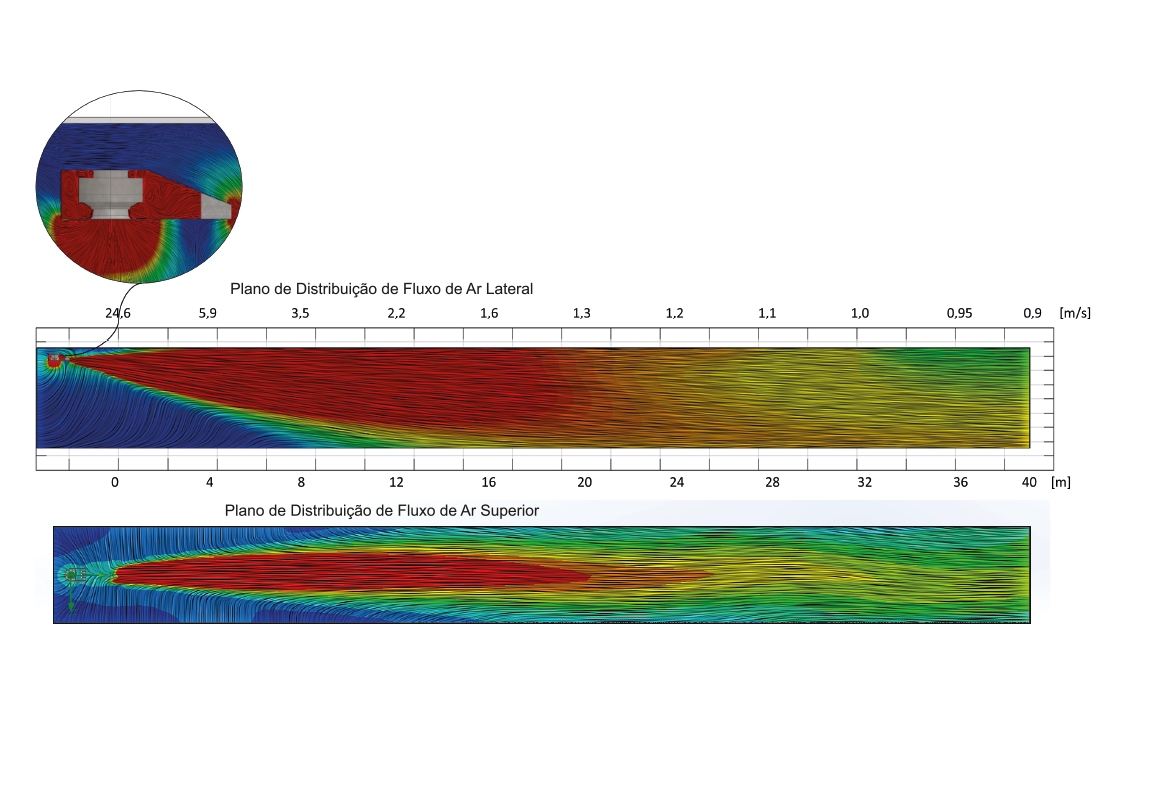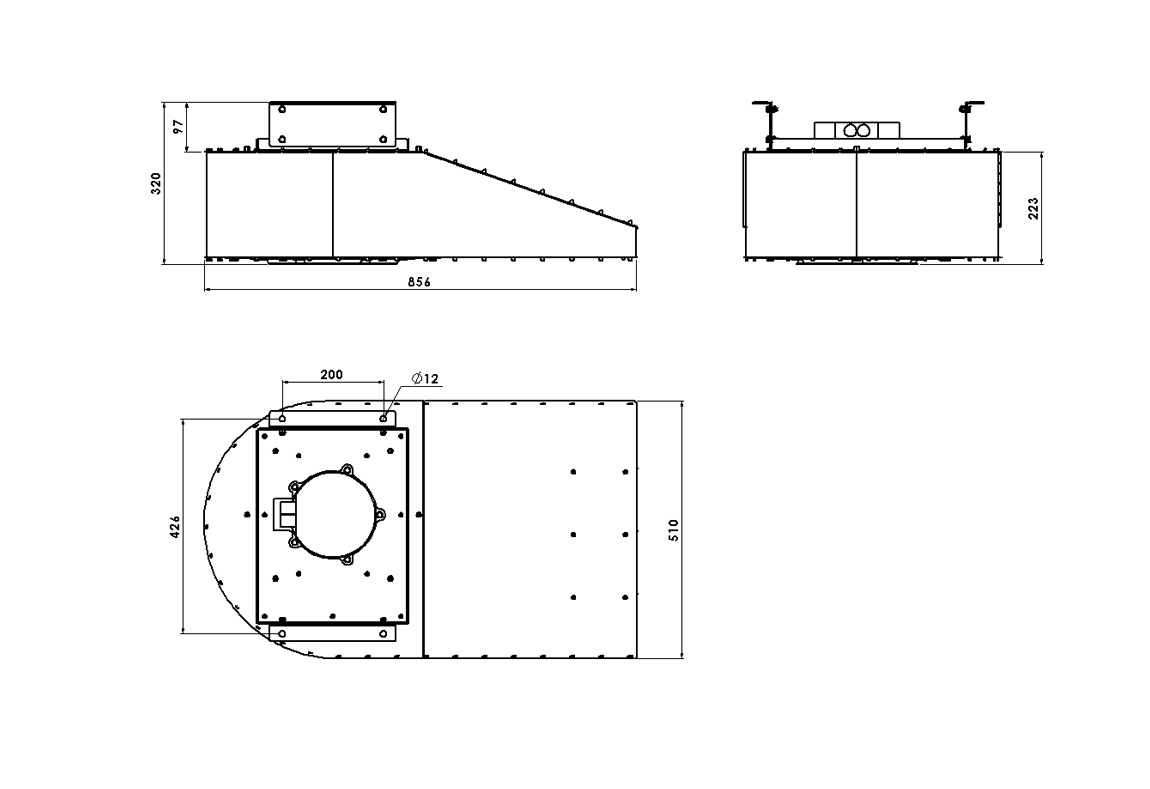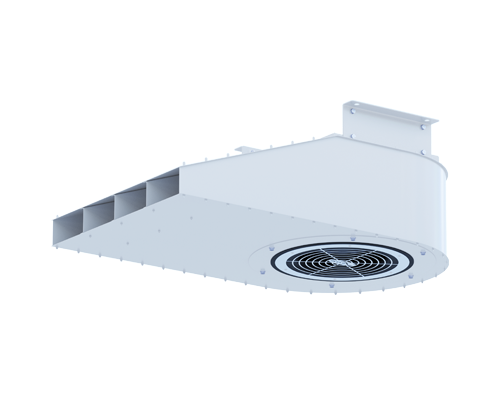The Powerjet fan, also known as a “high-induction jet fan,” increases air movement in large volumes without relying on complex duct systems. It’s the innovative solution redefining ventilation control in challenging environments such as underground parking garages, tunnels, and confined spaces.
It creates a concentrated and directed airflow, similar to the effect of long-range diffusers. These fans move and mix air throughout large spaces, preventing stagnant zones and areas with low air velocity. They are typically used in combination with air renewal systems to comply with design standards.
Equipped with EC Motor:
Powerjet comes with an EC (electronically commutated) motor, allowing rotation speed and noise levels to be adjusted according to carbon monoxide (CO) levels. This ensures an efficient and quiet response as needed.



